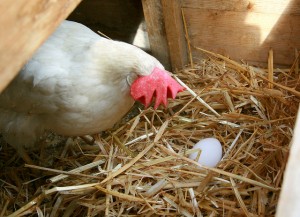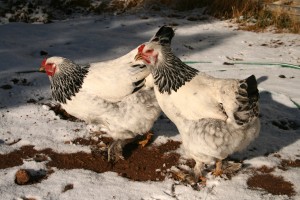Many myths exist about the color of an egg’s shell. As a general rule, hens with white earlobes lay eggs with white shells, and hens with red earlobes lay eggs with brown shells. Of course there are some exceptions to this rule. A common belief is that eggs with colored shells are more nutritious than those with white shells. Some people think that brown eggs taste strong, and others think brown eggs are fresher. It is what the chicken eats and how the chicken is cared for that affects the quality and flavor of the egg. Chickens raised in cages off the ground, without having green grass or scratch grains, garden or table scraps, don’t produce the darker, rich, orange-colored yolk. White-shell eggs produced by hens on pasture are more nutritious than eggs with colored shells laid by caged hens. Whether or not you prefer white eggs, brown eggs, green eggs, or spotted eggs is a matter of personal preference. Keep in mind, though, that the shell color actually has nothing to do with the egg’s nutritional value.
Sources:
Storey’s Guide to Raising Poulty
The Chicken Encyclopedia
Submitted by Darlene Kollasch




